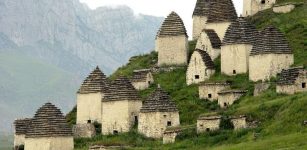On This Day In History: Alexander The Great Defeats Darius III Of Persia In The Battle Of The Granicus On May 22, 334 B.C.
AncientPages.com - On May 22, 334 BC., the Macedonian army of Alexander the Great defeated Darius III of Persia in the Battle of the Granicus.
The battle took place in Northwestern Asia Minor, near the site of Troy, and was the first of three major battles fought between Alexander the Great and the Persian Empire.
 The Battle of the Granicus (1665) by Charles Le Brun depicts Alexander the Great at the center of the cavalry battle. Charles Le Brun (1619–1690), Louvre Museum - Public Domain
The Battle of the Granicus (1665) by Charles Le Brun depicts Alexander the Great at the center of the cavalry battle. Charles Le Brun (1619–1690), Louvre Museum - Public Domain
Following the assassination of his father, King Philip II, in 336 BC Alexander the Gre
It was a battle in which Alexander the Great came close to failure and death.
Alexander was stunned by an ax blow from a Persian nobleman named Rhoisakes. A second Persian nobleman named Spithridates attempted to attack Alexander from behind while. However, he was himself killed by Cleitus the Black, who severed his outstretched arm.
Alexander quickly recovered.
Following the assassination of his father, King Philip II, in 336 BC, Alexander the Great won the army's allegiance and ascended to the throne of Macedon at age 20. He quickly noticed he was the head of a rebellious kingdom. The sudden death of his father had encouraged the barbarians to the north and west–and several Greek cities to the south–to revolt against Macedonian rule.
Alexander had suppressed all internal opposition within two years, crushed the barbarian revolts indecisive campaigns, and subdued the Greek insurrection. Once he had consolidated his power at home, Alexander enthusiastically took on the project his father had planned but never carried out–an invasion of the Persian Empire.
In the spring of 334 B.C, Alexander took 2,600 cavalries and went on a 20-day march from Macedon to Hellespont to join Parmenion in Asia.
The encounter with the forces of Darius III of Persia resulted in casualties of between 300 and 400 for the Greeks. The Persians had roughly 1,000 cavalries and 3,000 infantry killed, mainly in the rout.
Towards the end of this battle, Alexander buried the Persian commanders and the Greek mercenaries who were killed fighting on the enemy's side.
at won the allegiance of the army and ascended to the throne of Macedon at age 20. He quickly noticed he was the head of a rebellious kingdom. The sudden death of his father had encouraged the barbarians to the north and west–and several Greek cities to the south–to revolt against Macedonian rule.
Within two years, Alexander had suppressed all internal opposition, crushed the barbarian revolts indecisive campaigns, and subdued the Greek insurrection. Once he had consolidated his power at home, Alexander enthusiastically took on the project his father had planned but never carried out–an invasion of the Persian Empire.
In the spring of 334 B.C, Alexander took 2,600 cavalries and went on a 20-day march from Macedon to Hellespont, to join Parmenion in Asia.
The encounter with the forces of Darius III of Persia resulted in total casualties of between 300 and 400 for the Greeks. The Persians had roughly 1,000 cavalries and 3,000 infantry killed, mostly in the rout.
Towards the end of this battle, Alexander buried the Persian commanders and the Greek mercenaries who were killed fighting on the side of the enemy.
AncientPages.com




















